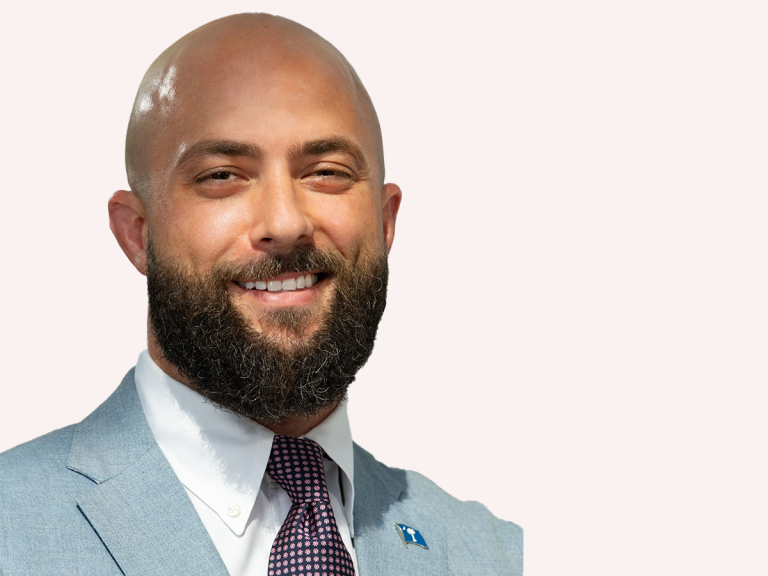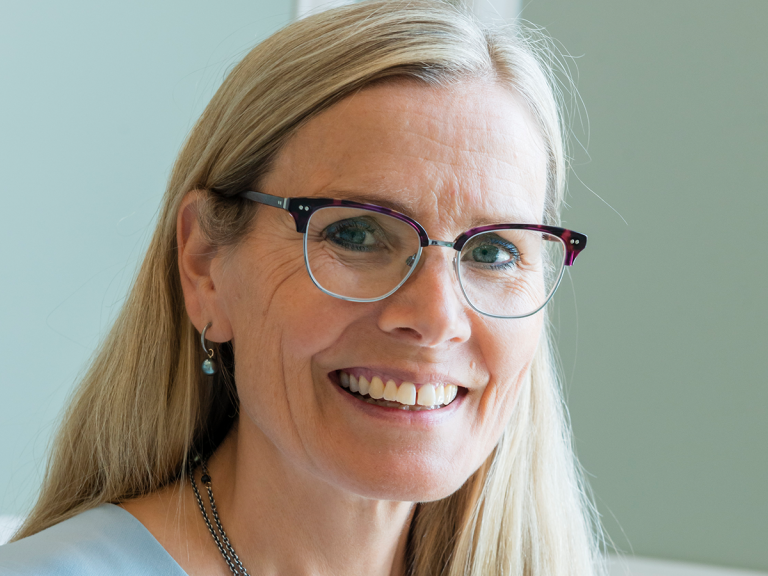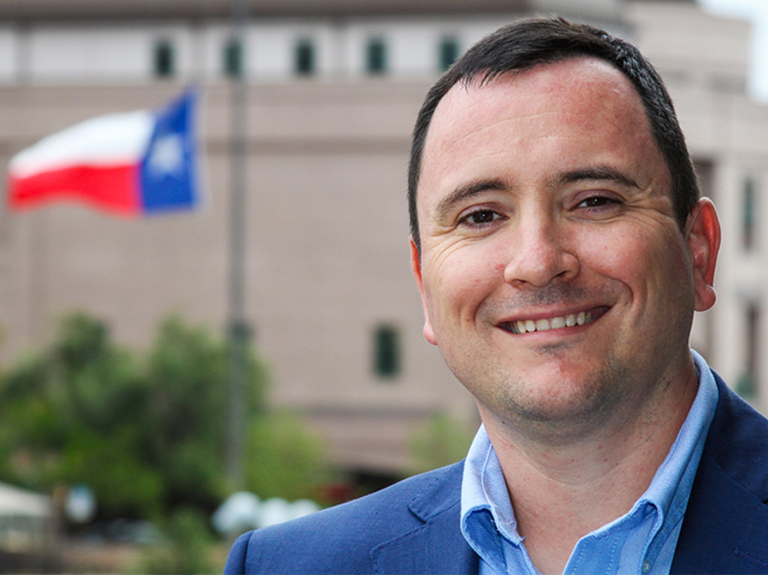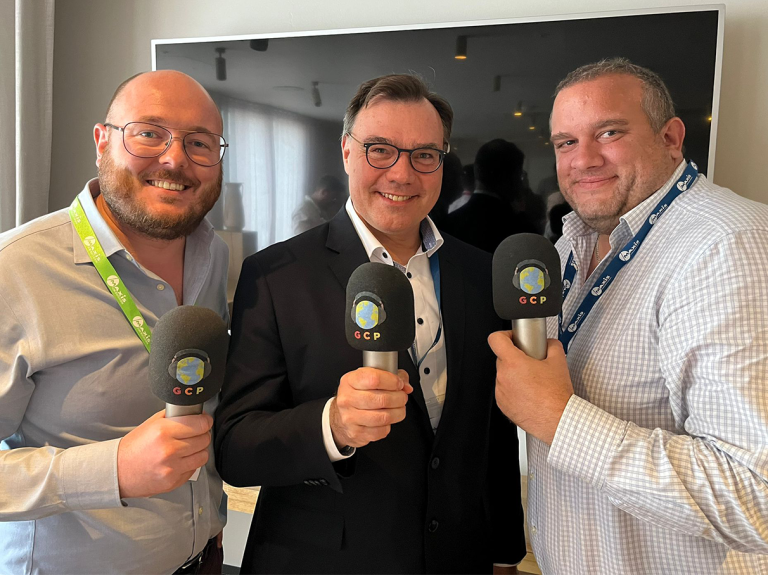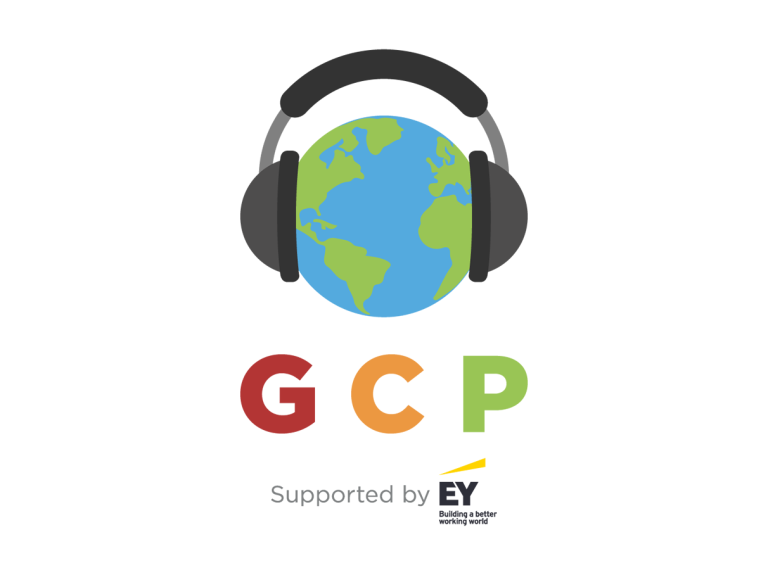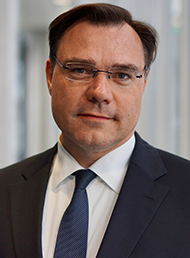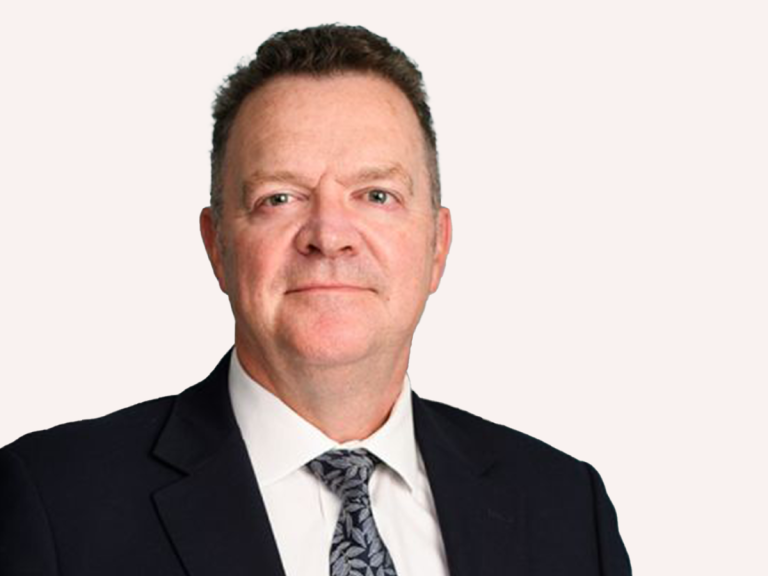Domicile Wars: Special purpose captives, regulatory autonomy benefits South Carolina’s proposition
Nevada “back on the map” as captive domicile – Commissioner Kipper
Nevada Insurance Commissioner Scott Kipper is “awfully bullish” on the future of captives in the State and believes it has an opportunity to put Nevada “back on map” as a top three or four domicile for US captives.
At the end of 2022, there was 155 captives licenced in Nevada.
Kipper was appointed Insurance Commissioner for Nevada in February this year following the resignation of Barbara Richardson, who had served in the role since March 2016.
Deputy Nevada insurance commissioner Nick Stosic believes one key factor hampering the State’s recent efforts to drive captive growth was the lack of an active captive Association.
“We now have an active Association and they’re working with us to help make sure we can have booths at various events and have some additional resources to promote what Nevada has to offer,” he said.
Stosic said the State is always trying to evaluate how it can provide an adequate regulatory environment, while also making sure they are not an impediment to captives.
“We’re looking at that balance all the time of what we need to properly regulate, but also make sure that we’re being reasonable in our requests,” he said.
Recent regulatory changes
Stosic told Captive Intelligence that the state recently changed the annual reporting requirements for captives.
Instead of reporting on 1 March, captives are now required to provide their annual reports by the end of July, the same period that audited financial statements and actuarial reports are due.
“We think that is going to be one area that will add additional simplicity, as instead of using estimated numbers, they are now going to have audited numbers and they are only going to have to file the one time instead of doing the two filings with us,” Stosic said.
Currently, any material business plan change must be filed with the division for preapproval, but the regulators are working with the captive industry to introduce new materiality standards.
This will mean that a change up to a certain level in premium or coverage would be allowed to be performed by the captive without requiring preapproval.
“Obviously, they’ll have to report to us later that they have it included in their annual report,” Stosic said.
“Very often they’re making just minor tweaks and coverages every year, and it seems like both overuse of our staff and unnecessary burden to having to always get approval before they can make those changes.”
Stosic believes Nevada has an “incredible” tax environment, while the state also has other statutes including D&O protection that make it “unique”.
Cannabis
Nevada was one of the first states in the US to approve cannabis risk.
“Since it’s a legal business in our state we feel it is important to try and make insurance coverage available for those business,” Stosic said.
“We have welcomed that as a risk, and even changed some of our statutes to make the banking a little bit easier.”
Despite state approval for cannabis risk, Kipper said Nevada has not had too much interest in cannabis captives.
“But we are welcoming those opportunities where entrepreneurs might want to dip their toes in,” he said.
“We’re happy to assist where we can provide, not only a technical guidance, but also all the other items that regulators can provide.”
Assembly Bill 398
Recent Nevada legislation, which disallows liability insurers from using eroding policy limits, which reduce policy limits by defence fees and costs for all insurance companies in the state, had previously been criticised by the National Risk Retention Association (NRRA).
Stosic said that one important caveat of the regulation is that it specifically states risk retention groups are not subject to Assembly Bill 398.
He also highlighted that Nevada currently has emergency regulation in effect while the permanent regulation gets through the legislature.
“The emergency regulation also specifically excludes risk retention groups, and the permanent regulation that the legislature pre-approved yesterday also specifically says that that Bill does not apply to risk retention groups and non-admitted lines,” Stosic said.
Pool Re renews reinsurance contract with Guy Carpenter
Great Britain’s terrorism reinsurance pool, Pool Re, has renewed its reinsurance broking contract with Guy Carpenter for three years, with an option to run to five.
Pool Re’s reinsurance covers property damage arising from nuclear, biological, chemical, and radiological attacks (CBRN), as well as property damage arising from cyber-triggered terrorist losses and conventional terrorist acts, and non-damage business interruption.
Any type of insurer, including captives, that cover terrorism risk in the UK can access the Pool Re reinsurance fund. Captives in various domiciles are members of Pool Re.
Pool Re’s reinsurance is estimated to underpin around 90% of the commercial property terrorism cover in Great Britain, protecting more than £2tn of assets belonging to businesses of all sizes across a range of sectors.
“The reinsurance that Pool Re buys is a fundamental part of our effort to find proactive ways to return risk to the market which is, in turn, a pre-condition of the unlimited financial support we continue to receive from HMT,” said Tom Clementi, CEO of Pool Re.
“Our reinsurance programme, which is the largest terrorism reinsurance programme in the world and has included two ground-breaking ILS deals, is core to our strategy and we are delighted to have reappointed Guy Carpenter as our reinsurance broker.”
He highlighted that Guy Carpenter has “significant skills and experience” in this area and will continue to be an important partner.
Guy Carpenter will support Pool Re in returning risk and premium to the private sector and comes as Pool Re seeks to modernise its treaty arrangements.
“We are delighted to be able to continue our long partnership with Pool Re which has seen the company achieve so much with the support of our terrorism and public sector focused practices,” said Paul Moody, CEO of Guy Carpenter, UK.
“The next few years will once again be pivotal for Pool Re and we are proud that they have chosen to work with Guy Carpenter on this next phase of their journey.”
New FERMA president keen to expand advocacy capabilities
Charlotte Hedemark has been appointed president of the Federation of European Risk Management Associations (FERMA).
Hedemark, who is a senior risk manager at SAP, took on the role at an official handover ceremony which took place at a FERMA seminar in Antwerp on 16 October.
“We want to expand our advocacy capabilities,” she said. “By developing partnerships with other EU professional or sectorial associations, and inside EU institutions.”
“We want to tap into even more expertise and knowledge and increase the involvement of the national risk associations in our advocacy work.”
FERMA has made some progress in recent years on lobbying for greater proportionality applied to captive regulation under Solvency II.
Hedenmark replaces Dirk Wegener, who concluded his four-year term as president with a speech during the FERMA seminar.
“FERMA has become much more impactful and effective in its advocacy work,” he said. “I would like to thank our members for their active engagement in our committees and working groups.
“This strengthens our expertise and the value we provide, both of which are recognised by the European institutions.”
He also highlighted the “tense but increasingly collaborative” relationship FERMA has with the insurance sector.
“We have cooperated with the insurance industry on regulatory issues and crucially ways to support risk transfer and I am sure FERMA will continue to increase dialogue and take concrete action on key issues for the insurance and risk management communities,” he added.
“I leave my role as President with FERMA in a strong position, and I am passing the baton on to Charlotte, knowing that the future of FERMA is in extremely capable hands.”
TDI re-hires Robert Rudnai as Texas’ first dedicated captive specialist
The Texas Department of Insurance (TDI) has re-hired Robert Rudnai as a captive specialist, where he will be responsible for licensing and monitoring Texas-domiciled captives.
Rudnai started in his new position on 2 October and is the result of State lawmakers directing the TDI to employ a specialist to support captive insurance oversight after lobbying from the Texas Captive Insurance Association (TxCIA).
“There’s an opportunity now to use the experience and operational knowledge gained over the last decade to evaluate and refine processes and procedures,” Rudnai said.
“This starts by my listening to our stakeholders and considering their perspectives.”
Rudnai previously worked at the TDI as a financial analyst, where he provided oversight to captives, and evaluated captive applications as part of his role.
Members of the captive industry operating in Texas had previously expressed concern over the length of time it was taking to establish a captive in Texas compared to other domiciles.
“The issue in Texas right now is staffing,” Andrew Marson, managing director at Strategic Risk Solutions and a TxCIA board member, told Captive Intelligence for our Texas long read published in January.
“They’re really struggling to employ people at the TDI. So, the speed of which you can form a captive in Texas is significantly slower than other domiciles.
“Therefore, it’s not attractive from that perspective, because it does take quite a bit of time.”
At the end of 2022, Texas had 73 captives licenced in the state, of which 72 were pure captives.
ZGEBS adds Bupa as Turkey partner to offer private medical cover
Zurich Global Employee Benefits Solutions (ZGEBS) has partnered with Bupa Acıbadem Sigorta (Bupa) to offer private medical cover for its customers in Turkey.
ZGEBS provides risk management, data and financing solutions for the international employee benefit plans of multinationals companies, including pooling and fronting for captive EB programmes.
Bupa has more than 7,000 organisations in its medical network and is one of the only providers in Turkey specialised solely on private health insurance.
“At the heart of our collaboration lies a shared focus on innovation and efficiency,” said Patricio Delacroix, head of network partner management operations at ZGEBS.
“Bupa’s cutting-edge automatic provision systems, developed internally with a stringent emphasis on claims analysis and sustainable pricing, optimises provision times and elevates the customer experience.”
Zurich offers health insurance solutions in more than 100 markets and covers more than one million employees.
“We both share the ambition of creating value for our customers,” said Işıl Kücük, chief sales officer at Bupa.
“Bupa’s strategy aligns perfectly with ZGEBS’ vision of transparency, measurability, and a win-win framework.
“By joining forces, we aim to optimize the pace and quality of insurance services and to reach a broader range of multinational customers.”
Lowering premiums, “winning hearts and minds” key to captive EB success
Risk managers are in a strong position when they implement a captive employee benefits programme because they have the power to lower premiums and engage the whole group, according to Marc Bentley, InterContinental Hotels Group director of risk finance, and Matthias Helmbold, vice president of global risk benefits, health and wellbeing at DHL.
Helmbold and Bentley were speaking on a panel at a London event organised by MAXIS Global Benefits Network and Captive Intelligence, that was also recorded for the Global Captive Podcast. Listen to the episode here, below or on any podcast app.
Bentley discussed how IHG had started reinsuring some employee benefits through the captive in 2017, while Helmbold reflected on DHL’s long journey, beginning in 1996, as the first company to take this approach.
Helmbold said the DHL programme had been successful because they were able to use premium pricing as a tool to encourage participation across the business.
“This is a muscle that I think is underutilised by a lot of EB captives. The risk managers are in a very, very strong position here,” added.
“The DHL programme did not grow because of a global mandate to place all EB covers into the captive. It was on the basis of actually being the best offer out there and business units actually saving money.”
Bentley agreed with this approach and said when IHG began captive participation, he did not to put a global mandate in place.
“It is absolutely a partnership so I purposely did not want the mandate coming down from up above,” he explained. “We’ll engage and we’ll win hearts and minds to make sure that this is a long-term solution for the company.”
Helmbold said employee benefits can be seen as a “tame animal” compared to some other risks that captive owners grapple with.
He said: “You need a bit of knowledge, you need to understand your medical trends, your long tail business, but compared with the exposures that you may be dealing with in your property programmes, or your D&O, and not even mentioning cyber risk, it’s high frequency, lower impact in many cases compared to many other risks that captives are writing.”
Helmbold added that collaboration with different parts of the business is key to creating understanding and support for the captive approach to financing employee benefits through a captive.
“Procurement is one example where people need to know what’s going on,” he said. “HR is key as they are the owners of policies locally and they are in charge of the benefit design, but not of the financing necessarily.
“Likewise, the sponsorship and the support from senior management. It is equally important that your CFO, CEO do know and understand and what’s going on and you don’t have any surprises.”
Concerning the quantitative and qualitative benefits resulting from the captive EB approach, both said it had been a success with further initiatives planned in the future.
Bentley said the multinational’s focus had initially been on improving its benefits offering, but it had since realised other benefits too.
“Our original goal with the captive programme was to enhance the benefits we were offering to our people – that was our original aim and we were successful,” he explained.
“As much as it wasn’t intended to be a cost saving, we’ve also achieved brilliant savings. We’ve probably saved about 30% on premium that was going out of the business, which is obviously positive, but not necessarily one of the key drivers or goals.”
Since 2015, DHL’s Health & Wellbeing programme has helped the company to mitigate medical trend, he said.
“At the moment we’re looking at savings north of €10 million on €80 million premium. Those are impressive numbers.”
Jeff Carr joins Liberty Specialty Markets
Liberty Specialty Markets has appointed Jeff Carr as global client executive after spending three and a half years in a similar role at Crawford & Company.
Carr will be responsible for growing and developing client relationships and delivering solutions that meet current and future needs.
Laura Burns, head of client management at Liberty, said: “ I am delighted that Jeff has joined our growing Client Management team. As well as a wealth of experience, Jeff brings a consultative style and a proven track record of delivering solutions, and I am very confident that our partners will love working with him.”
Captive Intelligence understands Liberty is keen to build out its captive capabilities and plans to make further hires with experience in this area.
Carr has extensive experienced with multinational clients and captive programmes, particularly with global programmes.
Prior to joining Crawford in 2020, he held several roles at QBE Europe, Chubb and AIG.
Shipping and mining captives among new Vermont formations
Vermont has licensed five new captives in the third quarter of 2023, taking the state’s total number of new licences for the year to 27.
The five new captives for Q3 include: Corrugate Country Insurance Corporation, Blue Canary Inc, 1920 Risk Assurance Inc, Steelshield Insurance Company, and RVC RE, LLC.
Captive Intelligence understands Corrugate Country Insurance Corporation is owned by Wisconsin-based shipping and packing supplies company Uline, while Blue Canary is owned by Alabama-based coal mining company, Warrior Met Coal.
Corrugate Country Insurance Corporation is managed by Strategic Risk Solutions (SRS), 1920 Risk Assurance is managed by Marsh, and RVC RE, LLC is manged by Artex.
Blue Canary and Steelshield Insurance Company are both managed by Aon.
Of Vermont’s 27 new captives registered in 2023 to date, 20 are pure captives, five are sponsored structures, one is an association captive, and one is a risk retention group (RRG).
According to Captive Intelligence’s data on the number of captives in each major domicile, at the end of 2022 Vermont had reached number one with 639 active captives at year-end.
In August, Captive Intelligence published a long-lead highlighting that the state is notresting on its laurels after taking top spot, with a focus on “quality over quantity” and a continued recruitment drive both within the regulator and across the local industry.


